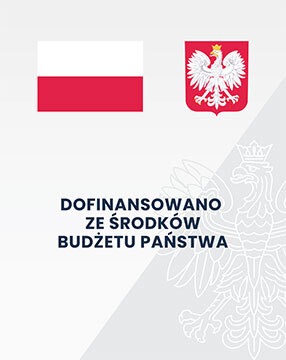PRZESTRZEŃ INFORMACYJNA JAKO TERMIN INFORMATOLOGICZNY
Małgorzata Kisilowska
Afiliacja: Instytut Informacji Naukoweji Studiów BibliologicznychUniwersytetu Warszawskiego, Polska
Abstrakt
Autorka analizuje interpretacje wyrażeń przestrzeń informacyjna, środowisko informacyjne i infosfera, które były dyskutowane w polskiej i anglojęzycznej literaturze z zakresu nauki o informacji przez ostatnie 25 lat. Odwołując się do tej analizy, proponuje przestrzeń informacyjną jako termin LIS, formułuje i wyjaśnia jego definicję.
Słowa kluczowe
Przestrzeń informacyjna; środowisko informacyjne; infosfera
Deskryptory Biblioteki Narodowej
1901-2000; 1945-1989; 1989-2000; 2001-; Definicja; Informatologia; Środowisko informacyjne; Terminologia;Bibliografia
Agosto D. E., Rozaklis L., MacDonald C., Abels E. G.: Barriers and challenges to teaching reference in today’s electronic information environment „Journal of Education for Library and Information Science” 2010, vol. 51, nr 3, s. 177-186.
Arte A.: The management of the scientific information environment: The role of the research library web site. „Online Information Review” 2001, vol. 25, nr 2, s. 88-93.
Babik W.: Ekologia informacji – wyzwanie XXI w. „Praktyka i Teoria Informacji Naukowej i Technicznej” 2002, nr 1(37), s. 20-25.
Babik W.: Ekologia informacji. „Zagadnienia Informacji Naukowej” 2001, nr 2(78), s. 64-70.
Babik W.: O niektórych chorobach powodowanych przez informacje. W: Komputer w edukacji. 16. Ogólnopolskie Sympozjum Naukowe. Kraków 29-30 września 2006 r. Pod red. J. Morbitzera Kraków 2006, s. 15-20.
Ballard E.: Exploration of nurses’ information environment. „Nurse Researcher” 2006, vol. 13, nr 4, s. 50-65.
Benyon D.: The new HCI? Navigation of information space. „Knowledge-Based Systems” 2001, nr 14, s. 425-430.
Berenfeld B.: Linking students to the infosphere. „Technological Horizons in Education Journal” 1996, vol. 23, nr 9.
Beynon D., Höök K.: Navigation in information space. Supporting the individual.
W: Human-computer interaction: INTERACT’97.Pod red. S. Howarda, J. Hammonda, G. Lindgaarda. Londyn 1997, s. 39-156.
Chatman E. A.: Life in a small world: Applicability of gratification theory to information-seeking behavior. „Journal of the American Society for Information Science” 1991, vol. 42, nr 6, s. 438-449.
Cole C., Leide J. E.: Using the user’s mental model to guide the integration of information space into information need. „Journal of the American Society for Information Science and Technology” 2003, nr 54(1), s. 39-46.
Collins R.: Part I. The delivery of information services within a changing information environment. The changing information environment. „Journal of the American Society for Information Science” 1991, vol. 42, nr 2, s. 120-123.
Floridi L.: A look into the future impact of ICT on our lives. „The Information Society” 2007, nr 23, s. 59-64.
Floridi L.: Information: a very short introduction. Oxford 2010, 138 s.
Floridi L.: The information society and its philosophy: Introduction to the special issue on The philosophy of information, its nature, and future developments. „The Information Society” 2009, nr 25, s. 153-158.
Fritch J. W., Mandernack S. B.: The emerging reference paradigm: A vision of reference services in a complex information environment. „Library Trends” 2001, vol. 50, nr 2, s. 286-305.
Hagedorn K.: The information architecture glossary. Argus Associates. 2000.
Hardof-Jaffe S. et al.: Students’ organization strategies of personal information space. „Journal of Digital Information” 2009, vol. 10, nr 5, [online]. World Wide Web: <http://journals.tdl.org/jodi/article/view/438/541>.
Hsieh-Yee I.: Educating cataloging professional in a changing information environment. „Journal of Education for Library and Information Science” 2008, vol. 49, nr 2, s. 93-106.
Jayawardana C., Hewagamage K. P., Hirakawa M.: A personalized information environment for digital libraries. „Information Technology and Libraries” 2001, vol. 20, nr 4, s. 185-196.
Jerit J., Barabas J., Bolsen T.: Citizens, knowledge, and the information environment. „American Journal of Political Science” 2006, vol. 50, nr 2, s. 266-282.
Krishman A., Jones S.: TimeSpace: activity-based temporal visualization of personal information spaces. „Personal Ubiquitous Computing” 2005, nr 9, s. 46-65.
Kulikowski J. L.: Człowiek i infosfera. „Problemy” 1978, nr 3 (384), s. 2-6.
Lievrouw L. A.: The information environment and universal service. „The Information Society” 2000, vol. 16, s. 155-159.
Ma J., Wang Y., Zhu Z., Tang R.: An attempt of data exchange between the institutional repository and the information environment for the management of scientific research – ARP. „Library Collections, Acquisitions & Technical Services” 2009, nr 33, s. 1-7.
Mabawonku I.: The information environment of women in Nigeria’s public service. „Journal of Documentation” 2006, vol. 62, nr 1, s. 73-90.
McHale J.: The changing information environment: A selective topography. 1972, 62 s.
McKnight C.: The personal construction of information space. „Journal of the American Society for Information Science” 2000, nr 51(8), s. 730-733.
Miller B., Malloy M. A., Masek E., Wild C.: Towards a framework for managing the information environment. „Information – Knowledge – Systems Management” 2001, nr 2, s. 359-384.
Newby G. B.: Cognitive space and information space. „Journal of the American Society for Information Science and Technology” 2001, nr 52(12), s. 1026-1048.
Nicholson D., Dunsire G., Macgregor G.: SPEIR: developing a common information environment in Scotland. „The Electronic Library” 2006, vol. 24, nr 1, s. 94-107.
Ocholla D. N.: Curriculum response to a changing national and international information environment: Theoretical and methodological paradigms on review and revision. „Education for Information” 2001, vol. 19, nr 143-167.
Przestrzeń informacyjna biblioteki akademickiej. Pod red. B. Antczak-Sabala, L. Tkaczyk. Toruń 2009.
Przestrzeń informacyjna książki. Pod red. J. Koniecznej, S. Kurek-Kokocińskiej, H. Tadeusiewicz. Łódź 2009.
Robinson B., Wilson F.: Soft systems methodology and dialectics in an information environment: A case study of the Battle of Britain. „Systems Research and Behavioral Science” 2003, nr 20, s. 255-268.
Romanych M. J.: Visualizing the information environment. „Military Intelligence” 2003, nr 3, s. 5-8.
Savolainen R.: Spatial factors as contextual qualifiers of information seeking. „Information Research Journal” 2006, vol. 11, nr 4. [online]. World Wide Web: http://informationr.net/ir/11-4/paper261.html dostęp: 10.06.2011.
Skórka S.: Architekt informacji – kreator przestrzeni informacyjnych. „Przegląd Biblioteczny” 2001, z. 1, s. 47-61.
Słownik encyklopedyczny informacji, języków i systemów informacyjno-wyszukiwawczych. Oprac. B. Bojar. Warszawa 2002.
Telvin Goh Ch. H., Hooper V.: Knowledge and information sharing in a closed information environment. „Journal of Knowledge Management” 2009, vol. 13, nr 2, s. 21-34.
Tomaszczyk J.: Angielsko-polski słownik informacji naukowej i bibliotekoznawstwa. Katowice 2009.
Vlahos M.: Entering the infosphere. „Journal of International Affairs” 1998, vol. 51, nr 2, s. 497-525.
Woźniak-Kasperek J.: Wiedza i język informacyjny w paradygmacie sieciowym. Warszawa 2011.
Afiliacja: Instytut Informacji Naukoweji Studiów BibliologicznychUniwersytetu Warszawskiego, Polska
Biogram:
CC BY-NC-ND 4.0 Uznanie autorstwa - Użycie niekomercyjne - Bez utworów zależnych 4.0 Międzynarodowe





